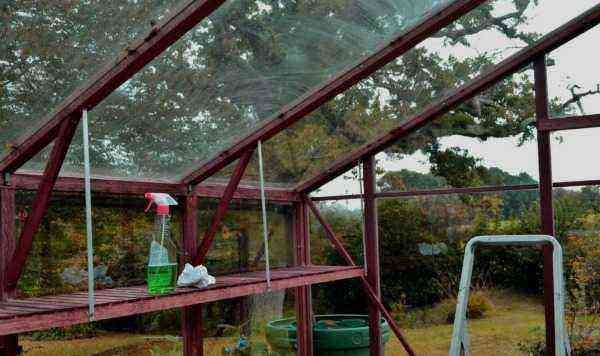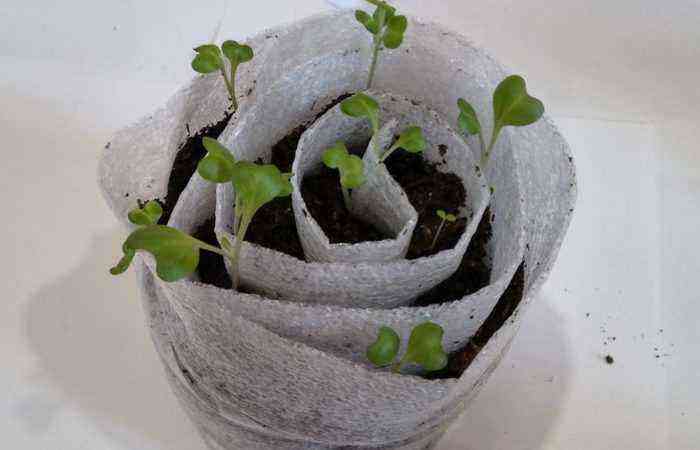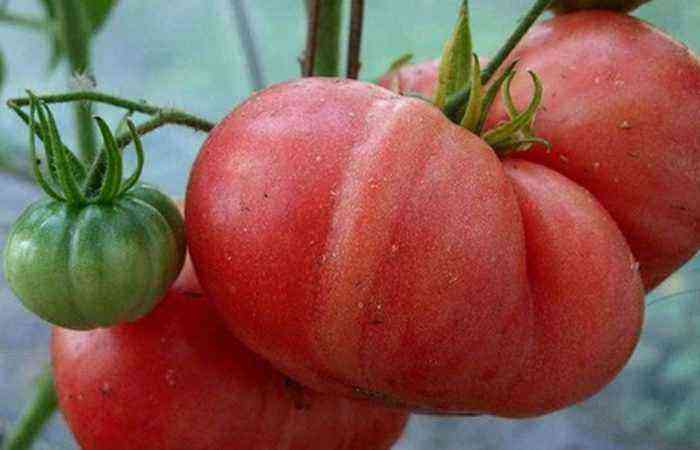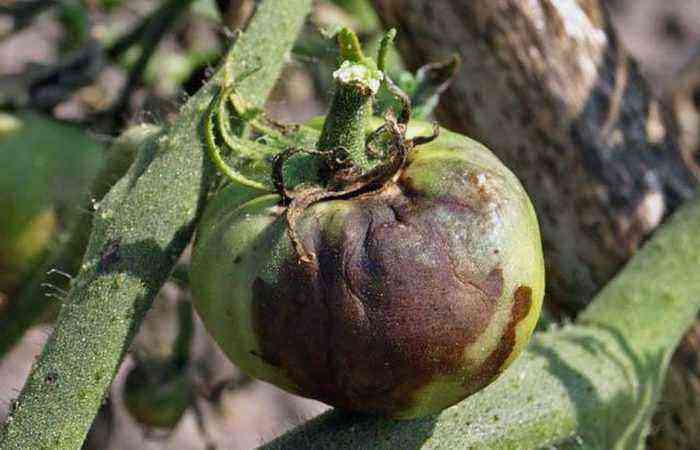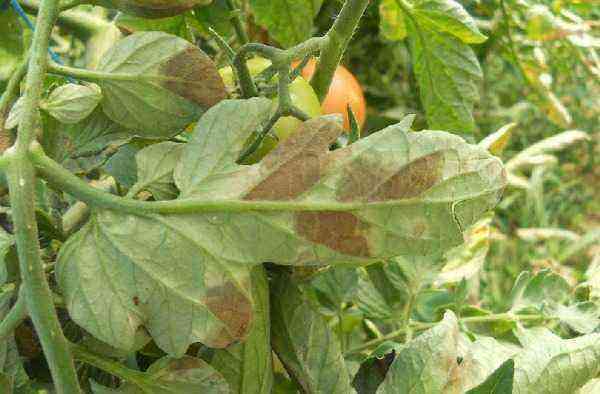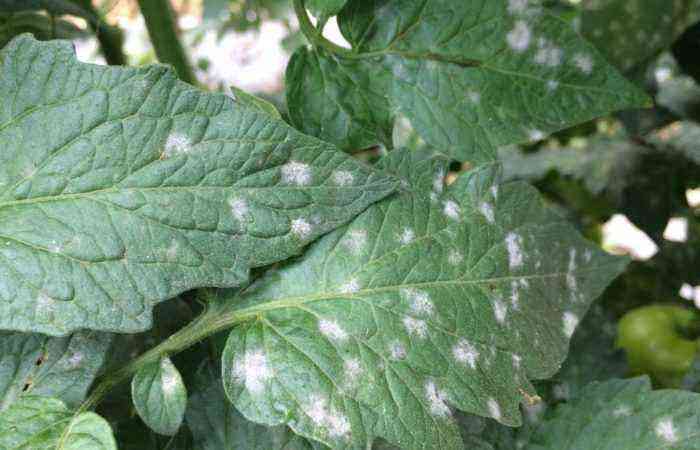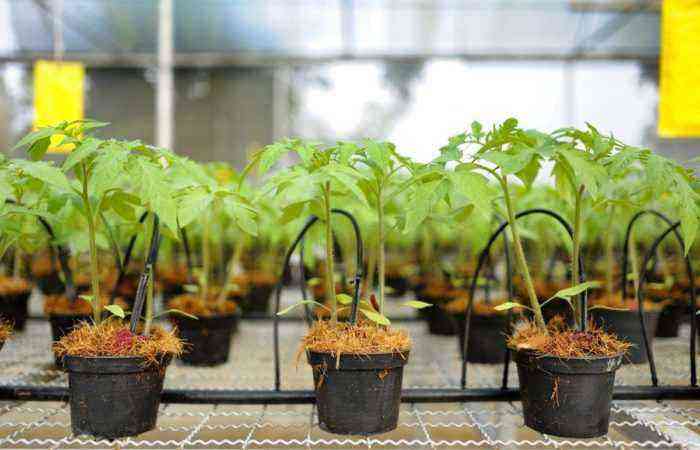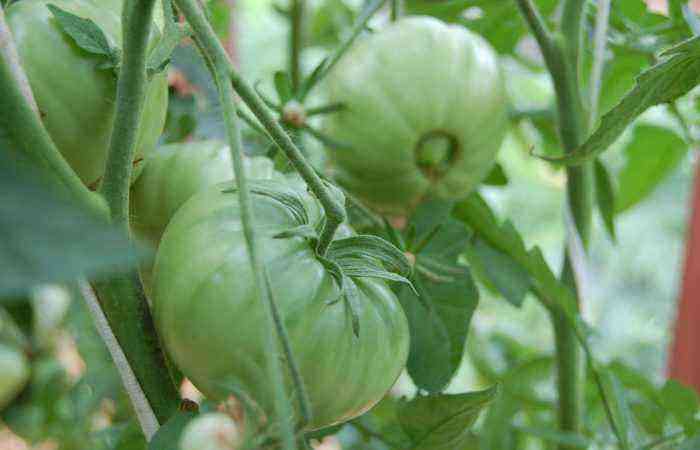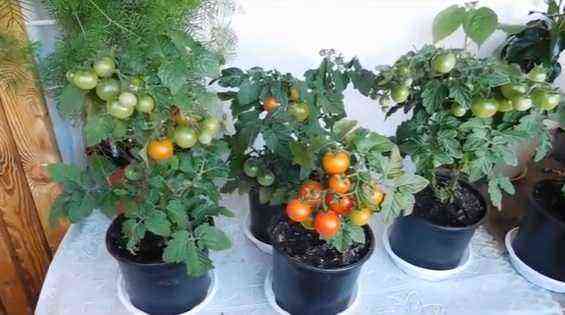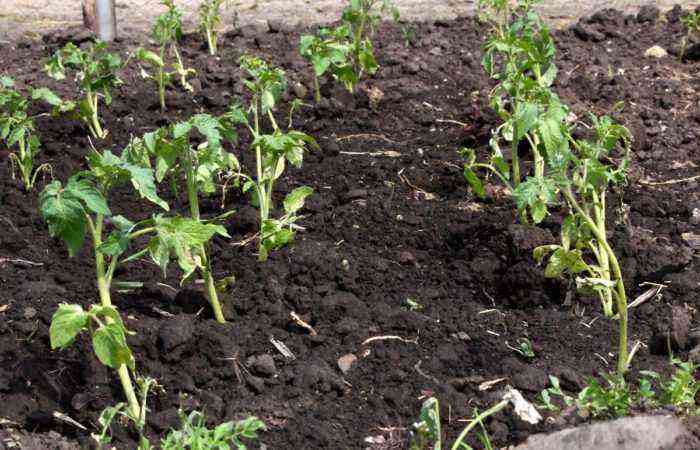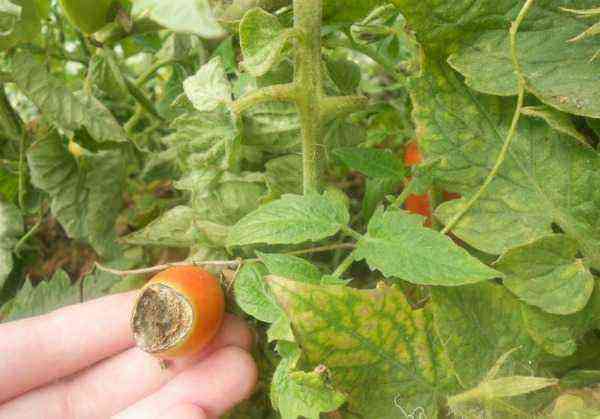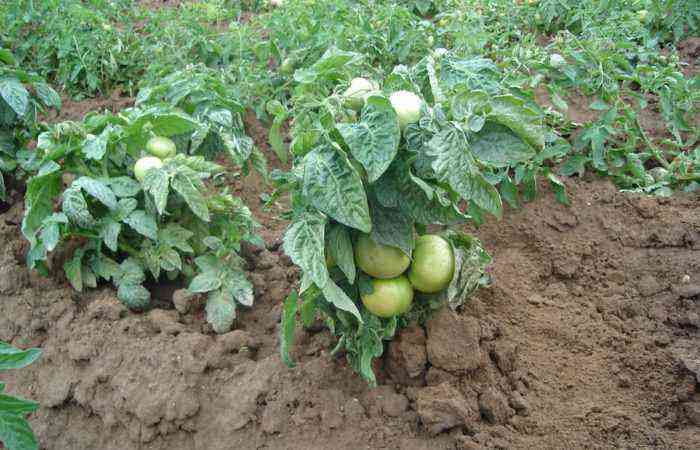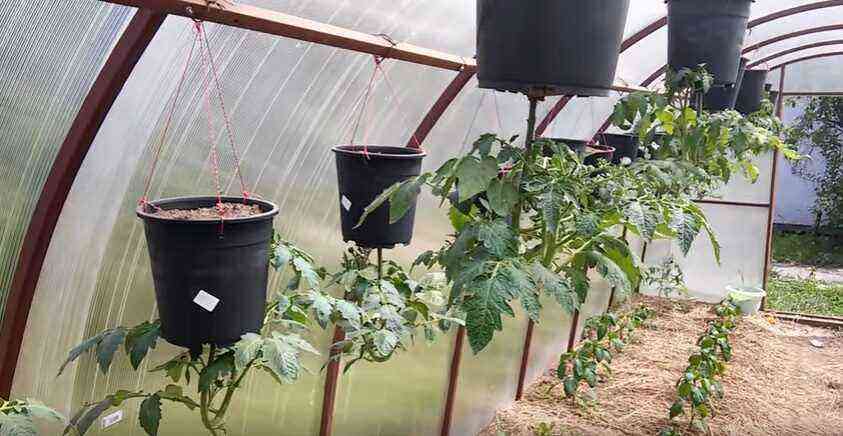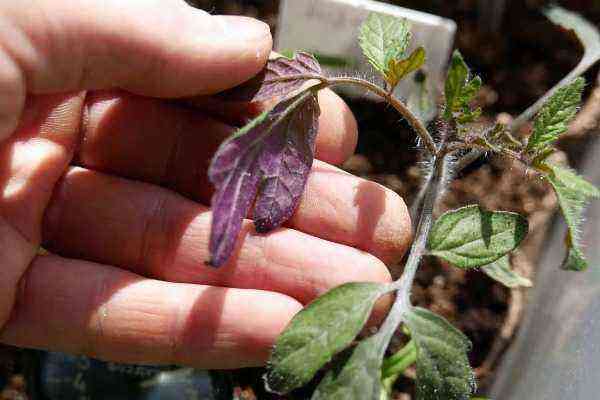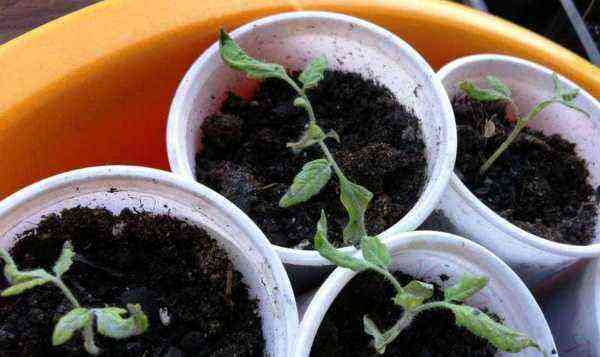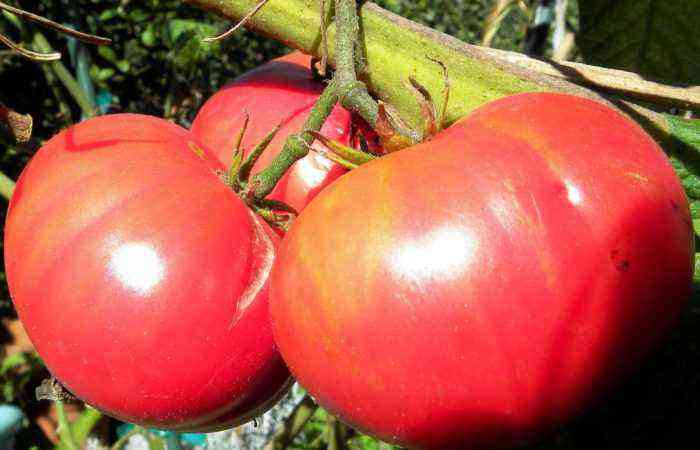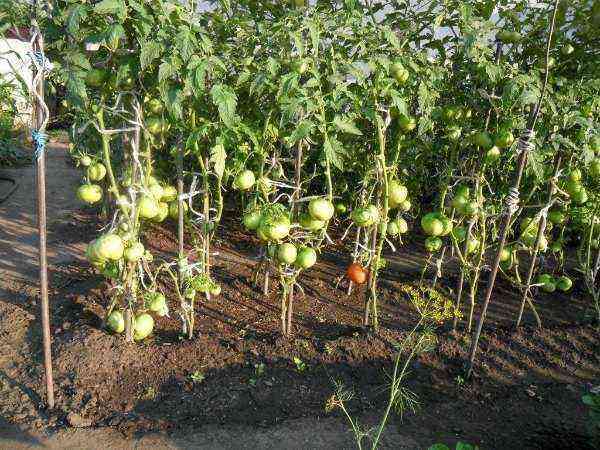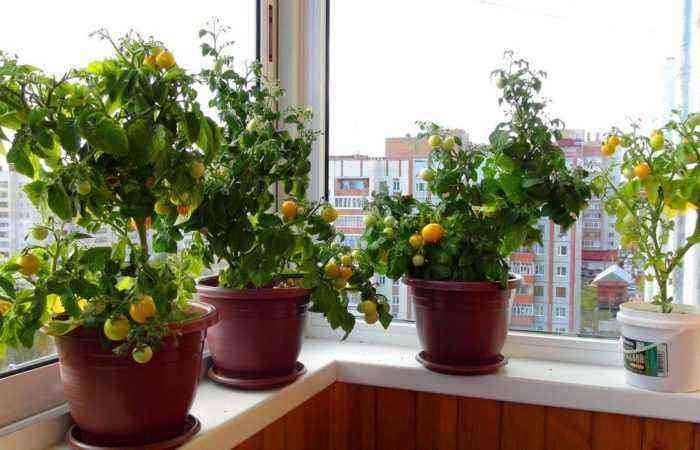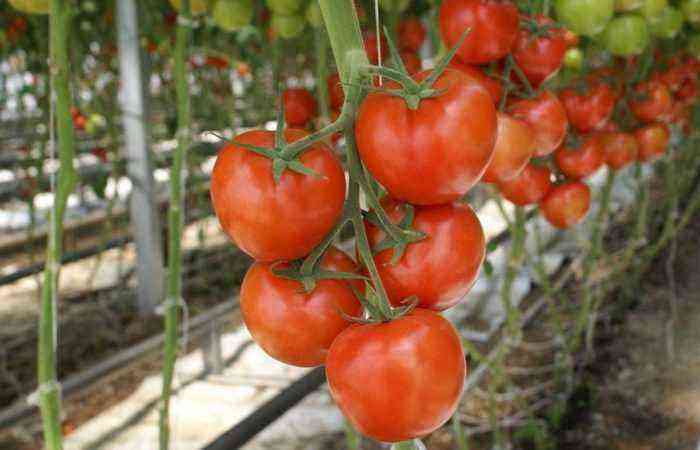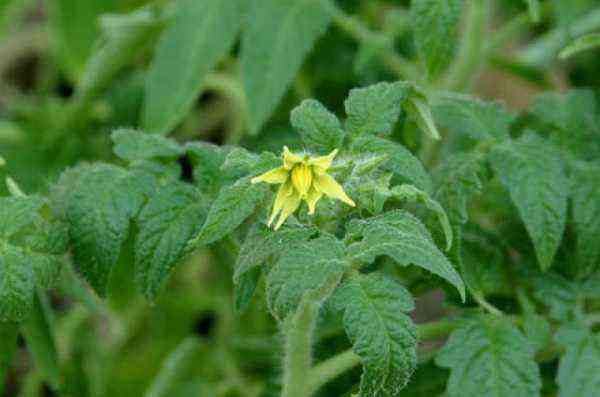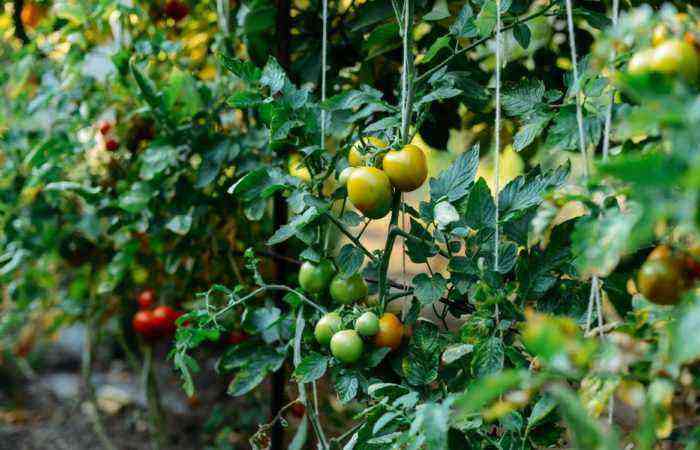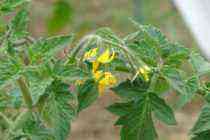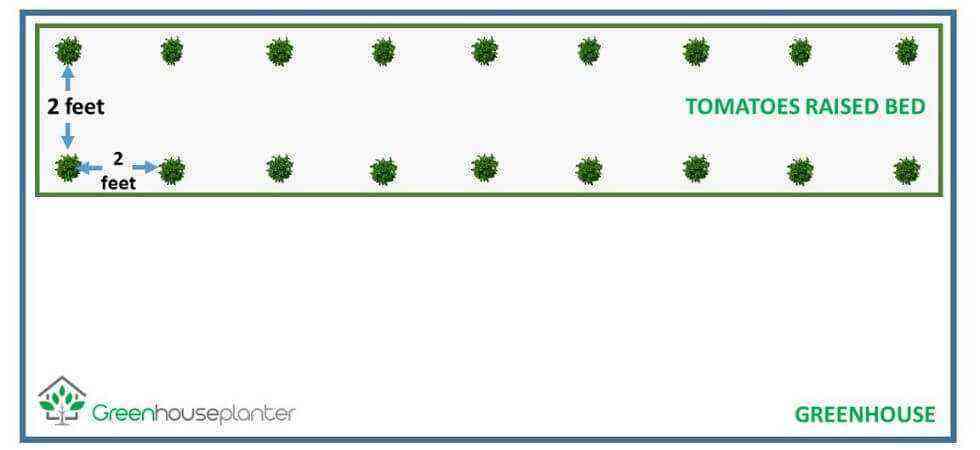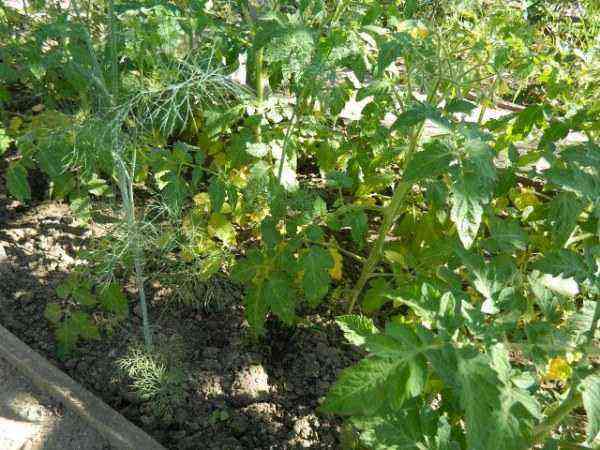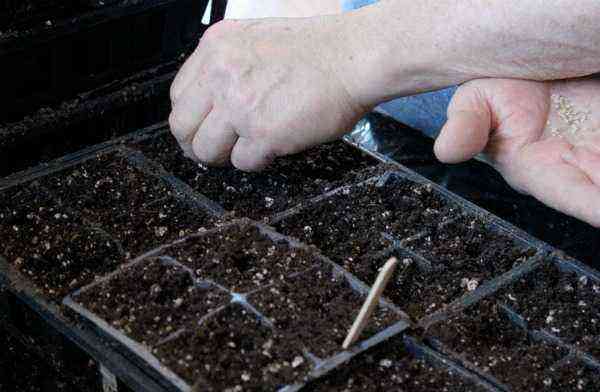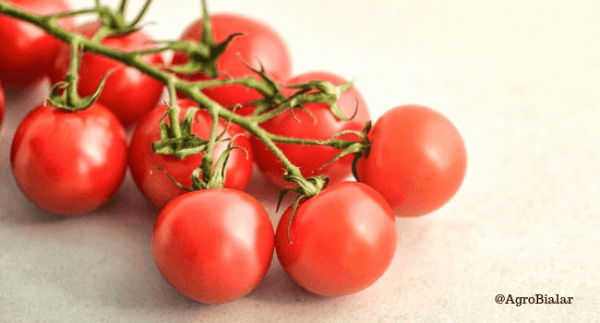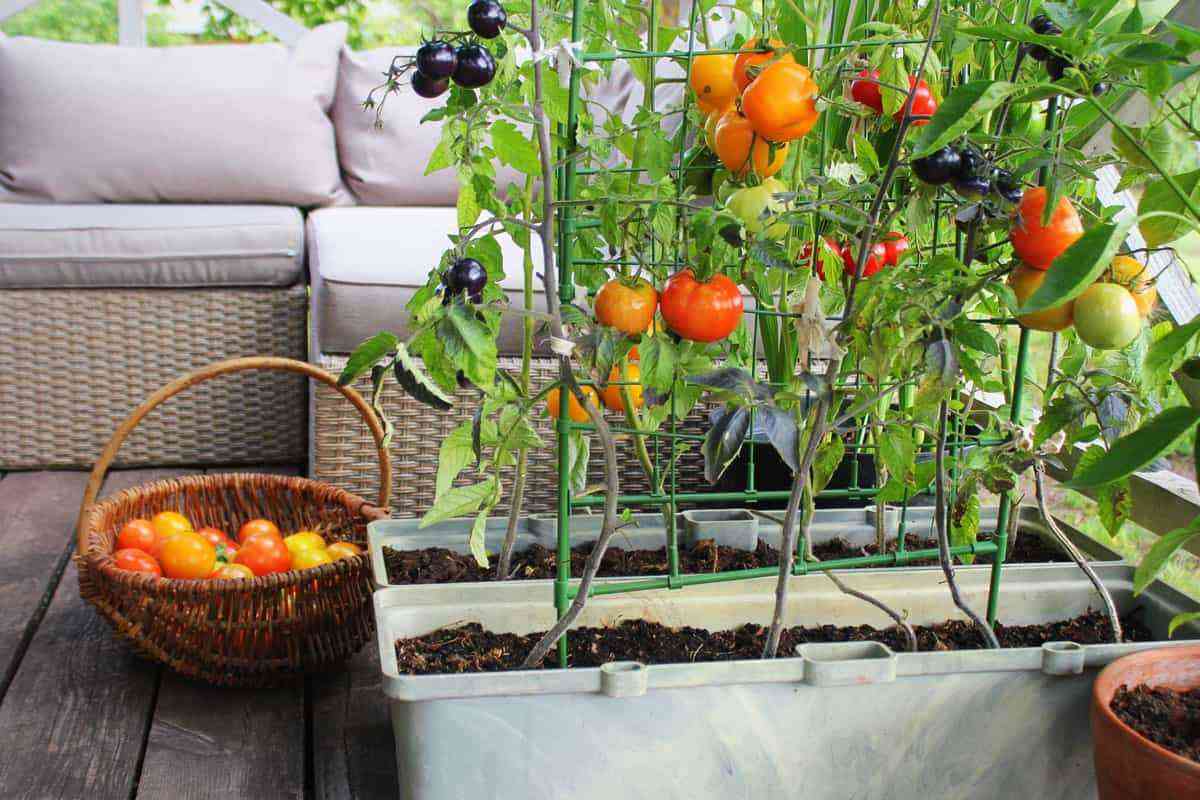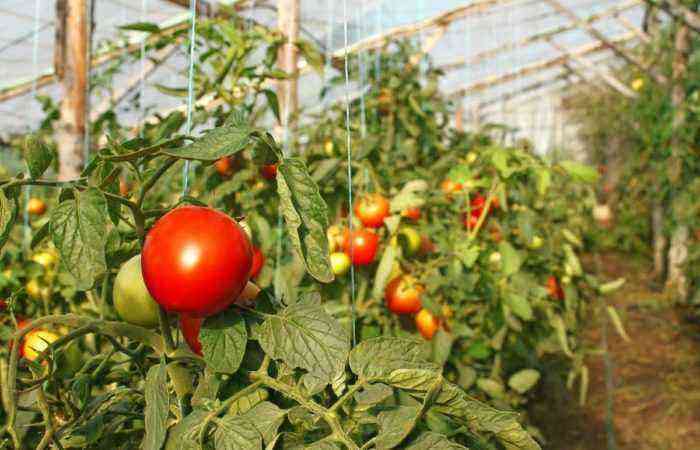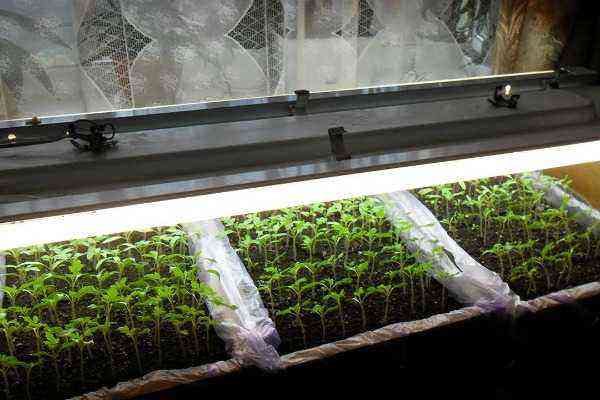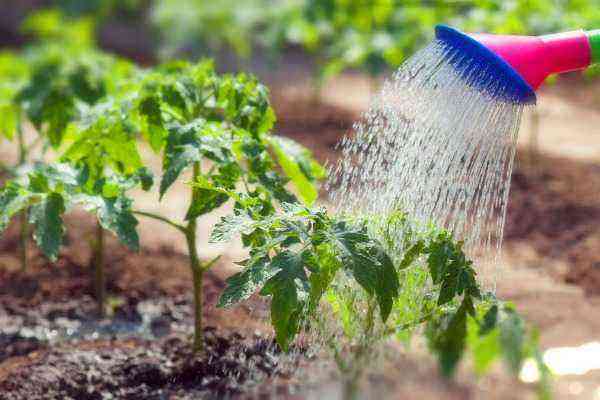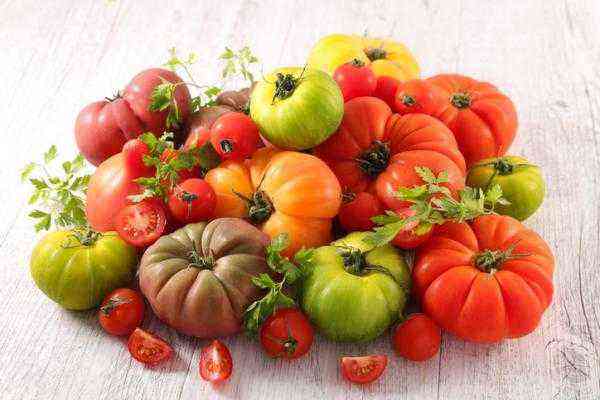Late blight or late blight, as people call this attack, is a very dangerous disease that, without exaggeration, can nullify all the efforts spent on growing a crop in a few days.
Phytophthora is the worst enemy of nightshade, especially tomatoes and potatoes. And if the crop is simply significantly reduced when the potato is damaged, then the tomatoes can die completely literally overnight. But this does not mean that the disease came so quickly.
Late blight fungus spores previously accumulated in plant debris and soil, waiting for their finest hour. To prevent the spread of the disease, special attention should be paid to tillage after harvesting plants damaged by phytophthora.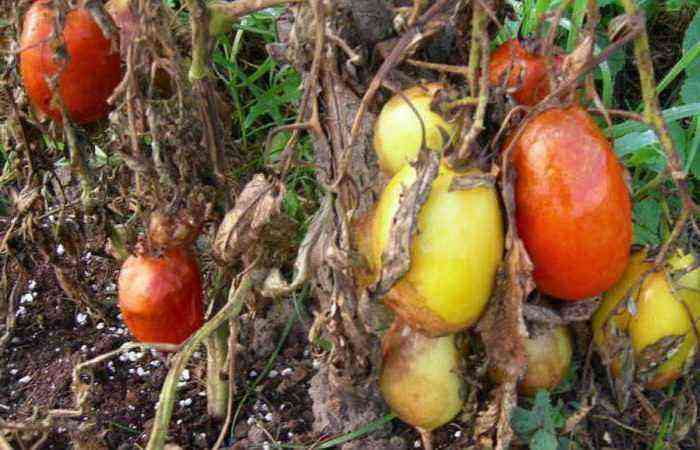
What is late blight of tomatoes
This disease is caused by the harmful fungus Phytophthora infestans. The defeat of plants by spores of the fungus occurs through the pores of the integumentary epidermis of the leaves, where they enter with drops of water. The disease spreads rapidly within the vegetative organs of plants, and it is very difficult to fight it at this stage.
The spores of the fungus are incredibly mobile, mobile, with the help of the wind they are carried over long distances. The spores of the pathogen are very resistant to difficult conditions and overwinter in plant debris, garbage, on tools and structural elements of greenhouses, as well as in the soil.
How to cultivate land from phytophthora in spring and autumn
The disease is insidious, in the fight against it, all means are good in their own way. And in this battle, the result is important. Which method to use depends on the situation.
Agrotechnical methods
- The all-rounder.
Phytophthora fungus most often affects all types of nightshade crops, especially potatoes, tomatoes, eggplants, and peppers. To prevent infection, these cultures cannot be used as predecessors of each other. It is possible to return plants of the nightshade family to their original place no earlier than after three years.
- Planting compatibility.
Phytophthora fungus spores easily migrate under the influence of even a weak wind, so nightshade crops are not recommended to be planted in neighboring areas.
- Distance between bushes.
Dense plantings contribute to poor ventilation, high humidity, which creates favorable conditions for the accumulation of fungal colonies and the development of the disease. Don’t let the beds thicken.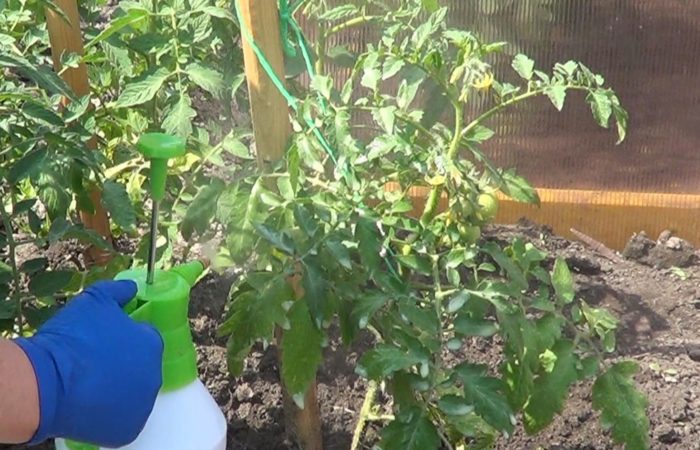
- Digging the ground in autumn.
Careful cleaning of plant residues, fruits and tubers with signs of the disease is one of the main measures for the prevention of late blight. The subsequent deep digging of the soil in the fall solves two problems:
- Prevents the resettlement of fungal spores that have survived on the soil surface after harvesting plant residues.
- The turnover of the soil layer makes the conditions for the wintering of the pathogen unfavorable, and some of the spores die.
- Soil treatment with boiling water in the spring before planting.
The spores of the fungus die in dry hot weather, as well as under the influence of high water temperature when watering the soil.
Thus, scalding the ground with boiling water can reduce the risk of late blight infection through the soil, but this method is difficult to apply over a large area.
Biological preparations
The drug not only contains beneficial microorganisms that destroy spores of pathogens, but also heals the soil, and also increases plant immunity. Baikal EM-1 is applied in the fall 2-3 weeks before the onset of the first frost or in early spring, but after the soil has warmed up.
The principle of operation is the same as that of Baikal EM-1. It is safe for humans and animals, effective in the warm season, it is used in early autumn and spring, during the preparation of the soil. Consumption rates of the drug – in accordance with the manufacturer’s instructions.
- Bactofit and Trichodermin.
The principle of action of drugs is based on the settlement in the soil of a fungus – an antagonist that blocks the vital activity of the fungus Trichoderma lignorum and eats it. For the effective use of drugs, certain conditions are required: they are brought under digging or mulch. The preparations are sold in the form of a liquid or a peat substrate and act at a temperature background from +5 to +30°C.
The preparations are most effective on acidic soils, they do not work well after liming the soil and adding ash.
The action of the drugs is similar to the more common fungicide Fitosporin. Used as a therapeutic and prophylactic agent in accordance with the manufacturer’s recommendations. They are safe for people and the environment, increase the immunity of plants. The preparations are applied after digging the soil in the fall to the top layer to a depth of 10 cm. The treatment is repeated in the spring, with the onset of steadily warm weather.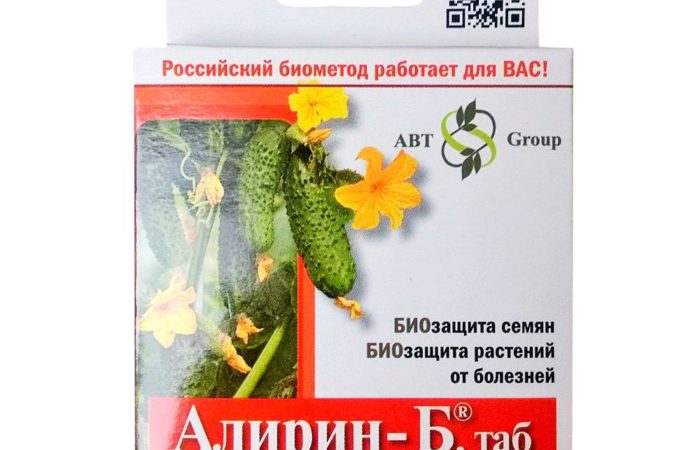
Preparations also belong to the microbiological group, which contain useful spore cultures that destroy phytophthora fungi. Means have a general strengthening effect on plants, increase immunity and improve growth. Used for processing plants during the growing season and pre-sowing soil preparation.
Soil disinfection is carried out before spring digging in various ways:
- The powder is scattered over the surface of the ridge, moistened with irrigation and dug up. The consumption rate is set in accordance with the manufacturer’s recommendations.
- Water the soil with a solution of the drug (on average, from 1,5 to 2 tablespoons per 10 liters of water).
Chemical substances
Important! When using chemicals, it is necessary to strictly follow the consumption rates in accordance with the manufacturer’s instructions and remember that these drugs destroy not only harmful, but also the necessary microflora.
A very common means for disinfecting soil that has been infected. To 10 liters of water add 100-200 g of Bordeaux mixture (1-2% solution). Spend on 1 m² of area from 1 to 1,5 liters of solution. It is used more often for autumn tillage after harvesting plant residues.
Treat the soil for prophylactic purposes after growing nightshade crops, if no severe phytophthora damage has been detected, in autumn it is possible with a solution of copper sulphate 0,2-0,3% (20-30 g per 10 l), and infected areas – 0,5 -1,0% (100-200 g per 10 l).
Less often, other copper-containing preparations are used for tillage, but they are much more expensive, although their effectiveness is the same as that of copper sulphate. They are also recommended for processing plants.
To destroy the foci of infection, you can use:
- Solution of copper oxychloride (HOM).
This is a contact drug, that is, it kills the spores of the fungus only with direct contact. To prepare a solution, 40 g of the drug is mixed in 10 liters of water. Mainly used for processing plants during the growing season.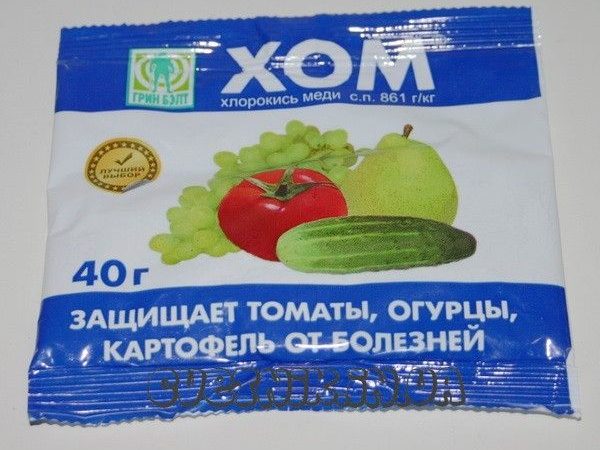
The drug is two-component. Copper oxychloride kills contact pathogenic flora and mycelium of the fungus already in the first hours after treatment. The period of this action is about 3 days. Oksadixil works systemically and for a long time (10-14 days), penetrating into the culture, gradually destroying spores. For processing, dilute 20 g of the drug in 10 liters of water. Spray plants in the growing season.
It is a contact fungicide that instantly infects the spores of germinating harmful fungi and protects the vegetable crop for 7-10 days. Resistant to rain washout. It is most often used to treat plants and the soil under them before flowering, and is also added to the holes when planting.
Attention! All chemicals are recommended for tillage before the plants enter the flowering phase or after harvest.
Folk ways
- Zelenka (brilliant green).
For processing, prepare a solution of 40 drops of the drug and 10 liters of water.
The antifungal properties of iodine are well known. For plant protection it is used in solution: water (10 l), skimmed milk (1 l), iodine (20 drops). More often used during the growing season for plants and soil.
Mixed with water in equal parts, the solution is used for spraying the soil and plants. To increase the effectiveness of the composition, add a few drops of iodine.
10 liter of kefir is added to 1 liters of water, mixed thoroughly and left for fermentation in a warm place for two days. The solution is used for spraying the soil, seedlings and adult plants with a frequency of 7 to 14 days.
Used to prepare a solution. Previously, 3-3 liters of ash are infused in 4 liters of water for 10 days, then the resulting extract is diluted to a volume of 30 liters. The solution is poured over the soil, and for spraying the plants, 40 g of laundry soap is added to it so that it sticks better. For soil cultivation, dry ash is often scattered over pre-moistened soil. Work can be carried out both during the growing season of plants, and during soil preparation.
Preluyu straw or hay is poured with water and infused for 5-6 days, then add 1 tbsp. a spoonful of urea per 10 liters of water and water the soil. Can be used before planting and during the growing season.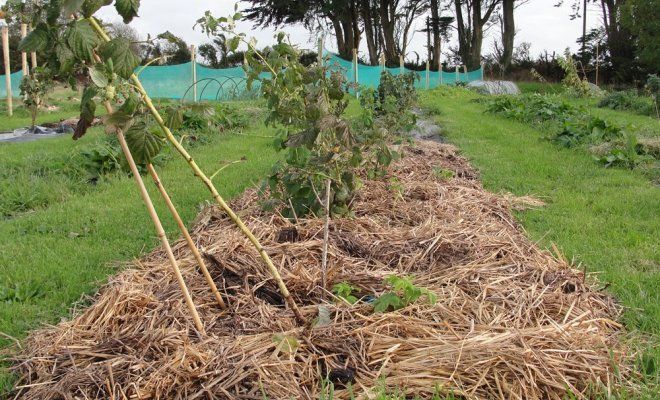
How to cultivate soil in a greenhouse
To get rid of phytophthora in a greenhouse, the approach must be comprehensive:
- carefully treat all structures with a solution of Bordeaux liquid, copper sulfate or potassium permanganate;
- use Fitosporin solution to disinfect the surface of the greenhouse;
- carry out fumigation of the greenhouse with sulfur;
- dig up the soil and treat with a fungicide.
Prevention of late blight tomato
Due to the fact that plant debris is a favorite place for spores of the late blight fungus, it is necessary to immediately destroy both affected plants and potential carriers of spores.
Such residues should be burned or buried at the edge of the site, where no one will open them, but in no case should they be used when laying compost heaps.
The soil immediately after harvesting plant residues, tubers and fruits is treated with one of the fungicidal preparations and dug up so that the spores remaining on the surface do not spread to neighboring areas.
Effective methods for improving the qualitative composition of the soil and preventing the development of the disease are:
- the use of crops of rye and other green manure, which are sown on the affected area and plow the green mass into the soil;
- avoidance of excess nitrogen and lime fertilizers;
- maintaining adequate levels of potassium and phosphorus.
Timely implementation of preventive, agrotechnical measures, removal of plants with signs of disease and soil disinfection will not only ensure a good harvest, but also improve its quality characteristics, minimize the use of chemicals in the fight against late blight.
